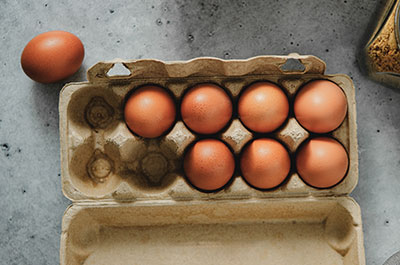If you look back on human history, our diets have become increasingly sweeter. Today, people simply expect their food to taste sweet. The result: We’re all eating too much sugar. In fact, according to the Centers for Disease Control and Prevention, the average American gets almost 20 percent of his or her daily calories from sugar.
Not only is excess sugar intake associated with chronic diseases including diabetes, heart disease, fatty liver and cancer, it’s also highly addictive. Experts suggest that sugar in any form works on the same reward pathways in the brain as addictive drugs.
As experts urge us to cut back, a growing number of food manufacturers are turning to natural sugar substitutes to sweeten processed foods.
These virtuous-sounding sweeteners crop up in obvious places like cookies, cakes and candy. But they’re also infiltrating almost every packaged food on grocery store shelves. You’ll find brown rice syrup in infant cereal, honey in mustard and agave in everything from granola to iced tea.
Don’t be fooled by the labels. They’re all just sugar. While each of these sweeteners has a different name, they’re processed in the body just like sugar cane.
Breaking Down Natural Sweeteners
Whether added sugar is from cane sugar or corn syrup, agave or honey, it is still sugar. Your best bet: Scour labels for added sugars, whether from natural sources or sugar cane.
While natural sweeteners may have a few modest health perks, they’re not something you should eat to improve your health.
Five sweeteners manufacturers are increasingly incorporating into products:
- Honey: Honey is sweeter and has more calories than an equal amount of sugar, but it can also soothe a sore throat. Just be sure to limit your intake to one teaspoon to keep calories – and sugar intake – in check.
- Blackstrap molasses: Unlike other common sweeteners, blackstrap molasses contains iron, copper, calcium, manganese, selenium and potassium.
- Brown rice syrup: Made from heating brown rice with enzymes, brown rice syrup is about half as sweet as white sugar. The process converts about 50 percent of the starch from brown rice into sugars. And while brown rice is nutritious, its syrup is calorically-dense with almost no essential nutrients. Another drawback: Manufacturers may need to use more of the sugar-like substance to sufficiently sweeten foods.
- Agave nectar: Agave comes from the agave plant. It’s known for giving tequila a smooth finish. In recent years, the sweetener has been cropping up in cookies, cakes, desserts and milkshakes. Since agave is primarily fructose (fruit sugar), it’s absorbed more slowly into the bloodstream than cane sugar. Agave is about 1.5 sweeter than sugar, with 60 calories per tablespoon compared to 40 in table sugar.
- Maple syrup: Making maple syrup is a time-intensive process that involves boiling down the sap from maple trees until the sugars transform into a thick syrup. The sweet stuff contains a few minerals, including calcium, manganese and potassium — and the darker varieties have a few antioxidants, too.
Sugar-Slashing Strategies
The highly processed, refined sugar you find in packaged foods or beverages most often contains few additional nutrients. While natural sweeteners might contain small amounts of specific nutrients, it’s not enough to justify eating as much as your sweet tooth desires. Here are my tips to slash the bad stuff and focus on what’s really sweet.
- Read labels: Added sugars are now listed on labels, so consumers can differentiate between sugar that’s naturally in a food (like fruit) and sugars that manufacturers added in.
- Be wary of beverages: Sodas, sweet coffee drinks and bottled iced tea usually get their sweetness from cane sugar or high fructose corn syrup. Both are problematic because they offer no added nutrients, just sugar.
- Choose whole foods: When it comes to sugar, it’s best to focus on naturally occurring sugars in foods like fruit, milk and starchy vegetables. Instead of drinking juice, eat whole fruit. Instead of raisins, eat grapes. The more water a food contains, the less likely it is to pack excess sugar.
- Amp up the spices: Consider enhancing the flavor in your favorite dishes with spices. Cinnamon, nutmeg, ginger and extracts of almond, vanilla and lemon can make dishes taste a little sweeter without sugar.
- Limit obvious offenders: While it may be tough to spot sugar lurking in foods that don’t taste sweet, try to limit obvious culprits — candy, cookies, cake and cereals.
To successfully limit your intake, pay attention to where hidden sugars are – salad dressing, ketchup, canned soup – and then identify where to cut back and what you can do instead. Over time, your taste buds will adjust to a healthy diet that’s a little less sweet.
To find a registered dietitian at Henry Ford, visit henryford.com or call 1-800-HENRYFORD (436-7936).



